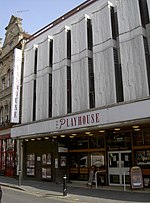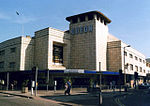Spring Cove Cliffs
Cliffs of EnglandSites of Special Scientific Interest in North SomersetSites of Special Scientific Interest notified in 1952Weston-super-Mare

Spring Cove Cliffs (grid reference ST310625) is a 2.0 hectare geological Site of Special Scientific Interest near the town of Weston-super-Mare, North Somerset, notified in 1952. The site is listed in the Geological Conservation Review, because of the stratigraphic and igneous features which are displayed. The sequence of Dinantian volcanic rocks, about 18 metres (59 ft) thick, lying to the south of the St George's Land landmass, and also because of the submarine character of the lavas and their intimate relationship with adjacent carbonate sediments. The lava, which is pillowed in places, is believed to have been extruded upon a sloping seafloor.
Excerpt from the Wikipedia article Spring Cove Cliffs (License: CC BY-SA 3.0, Authors, Images).Spring Cove Cliffs
Kewstoke Road,
Geographical coordinates (GPS) Address Nearby Places Show on map
Geographical coordinates (GPS)
| Latitude | Longitude |
|---|---|
| N 51.35736 ° | E -2.99233 ° |
Address
Kewstoke Road
Kewstoke Road
BS23 2ER
England, United Kingdom
Open on Google Maps










